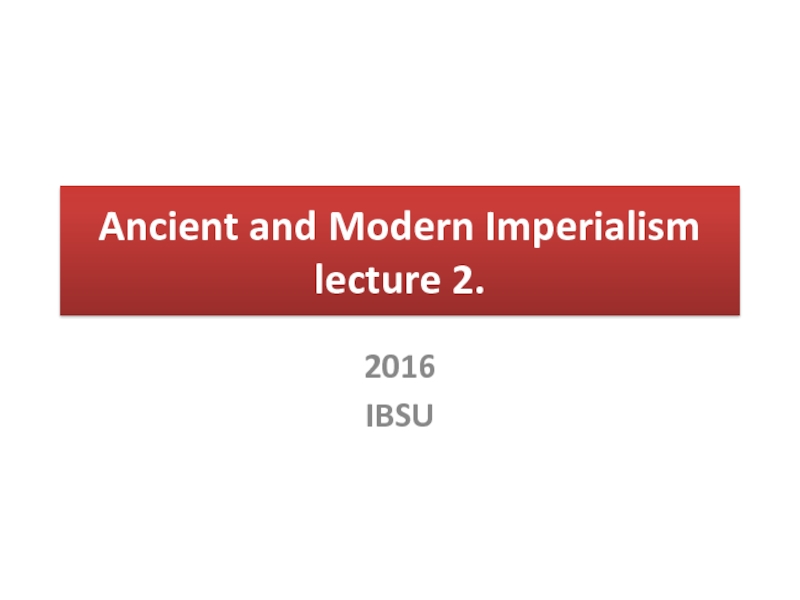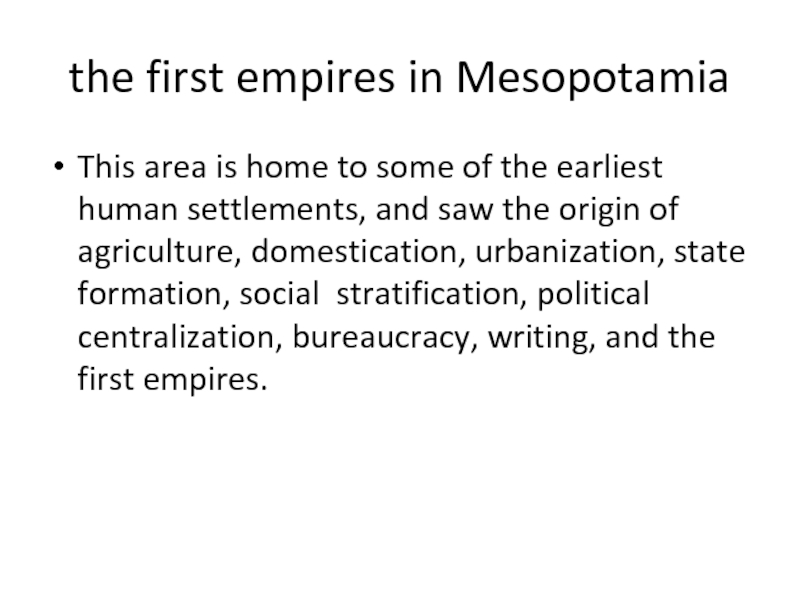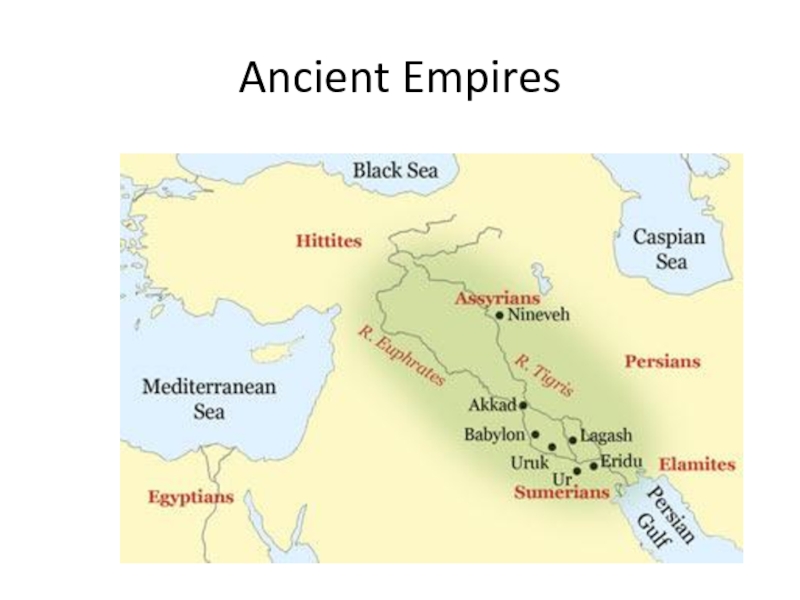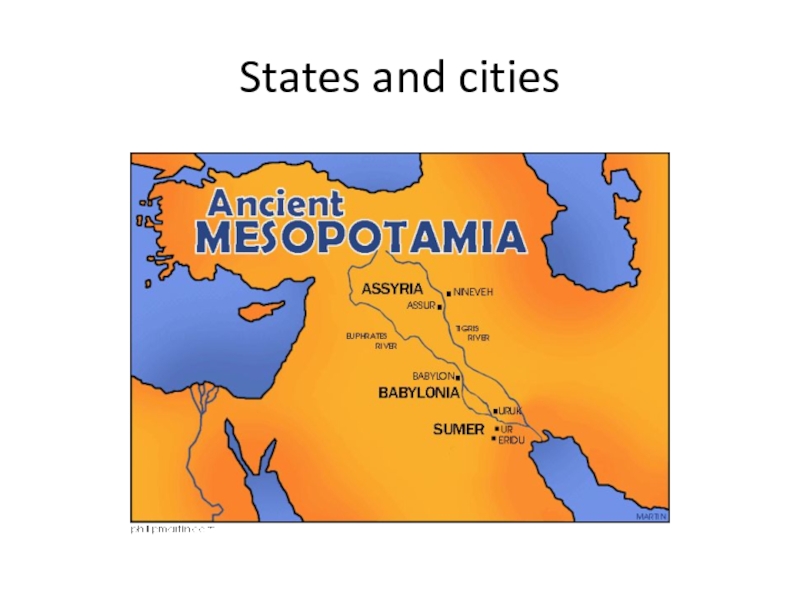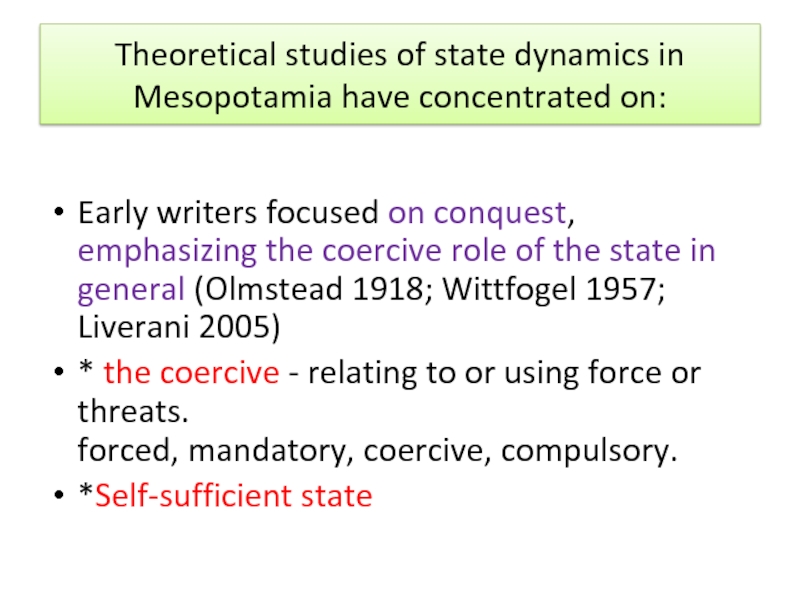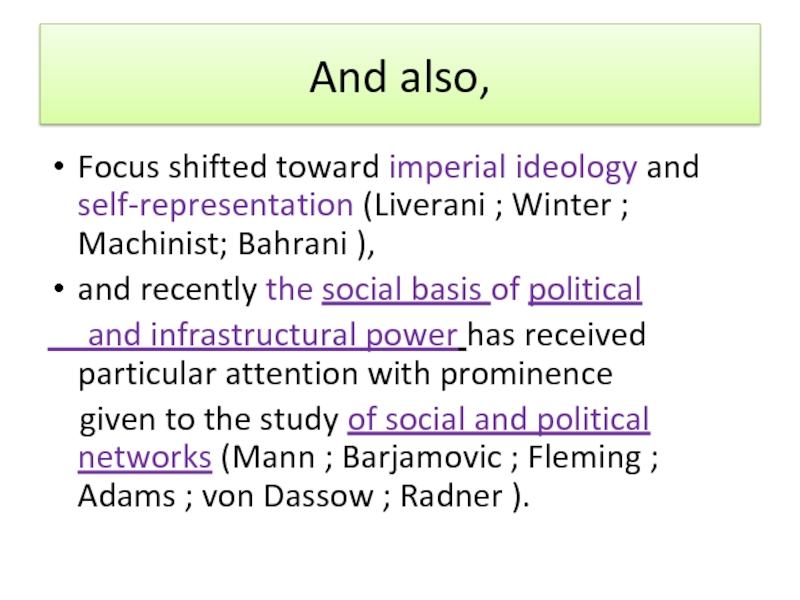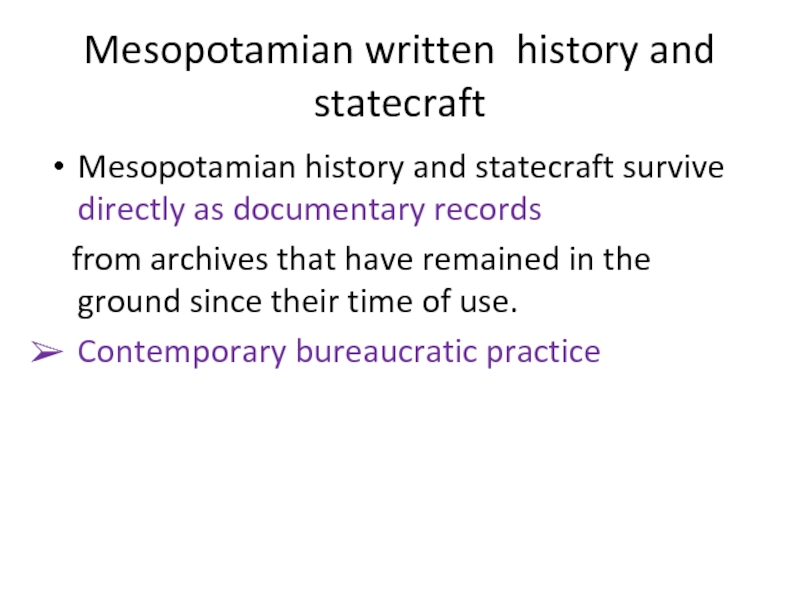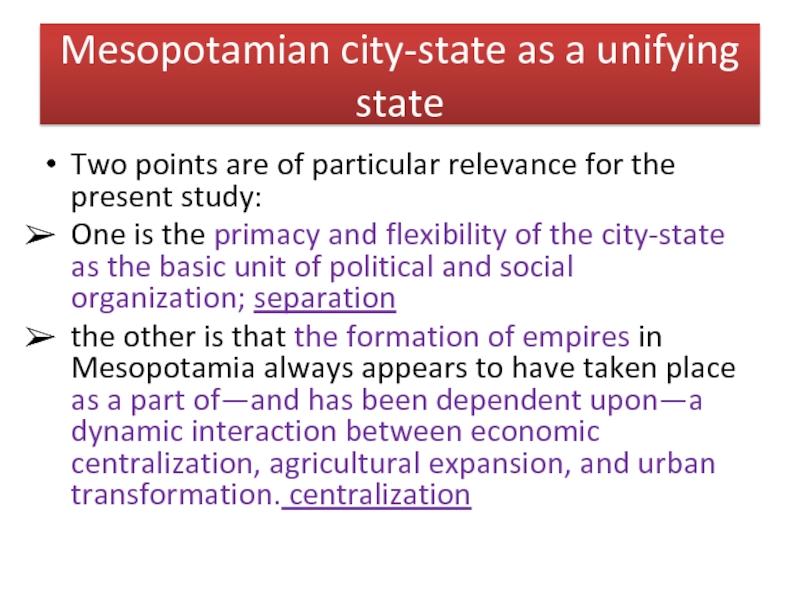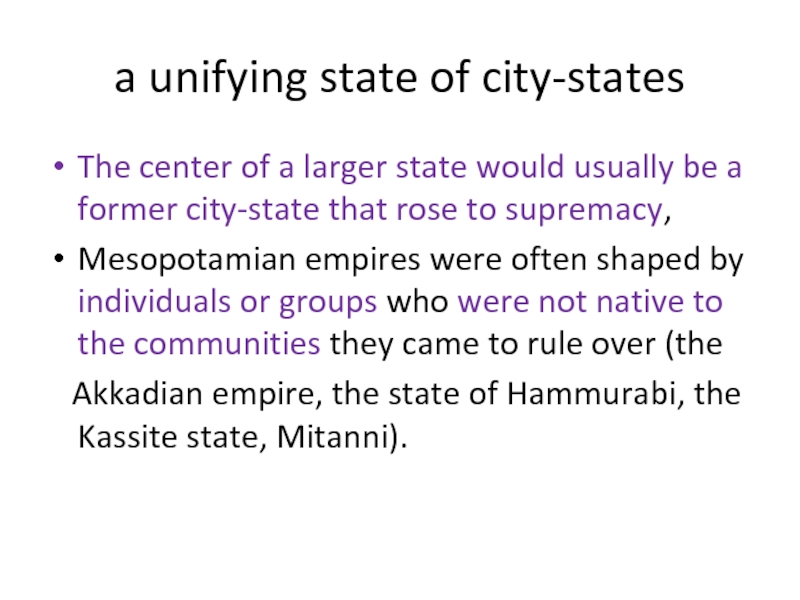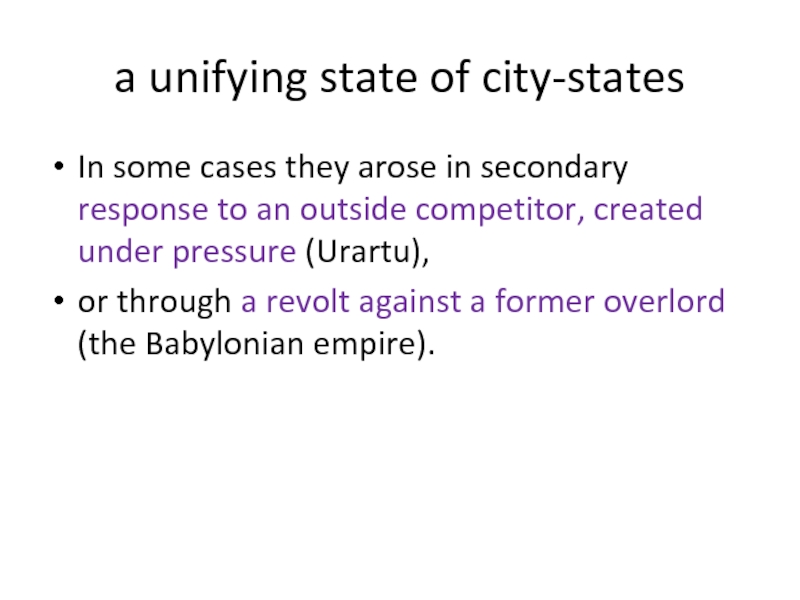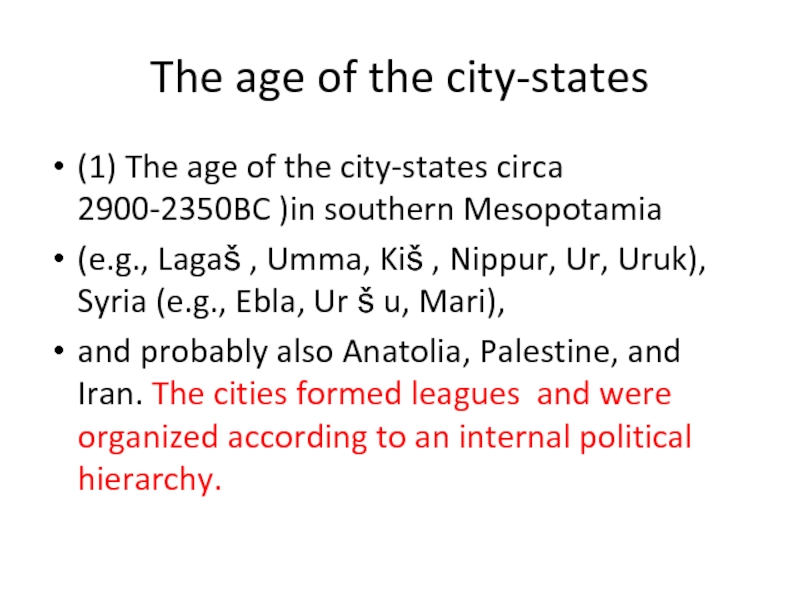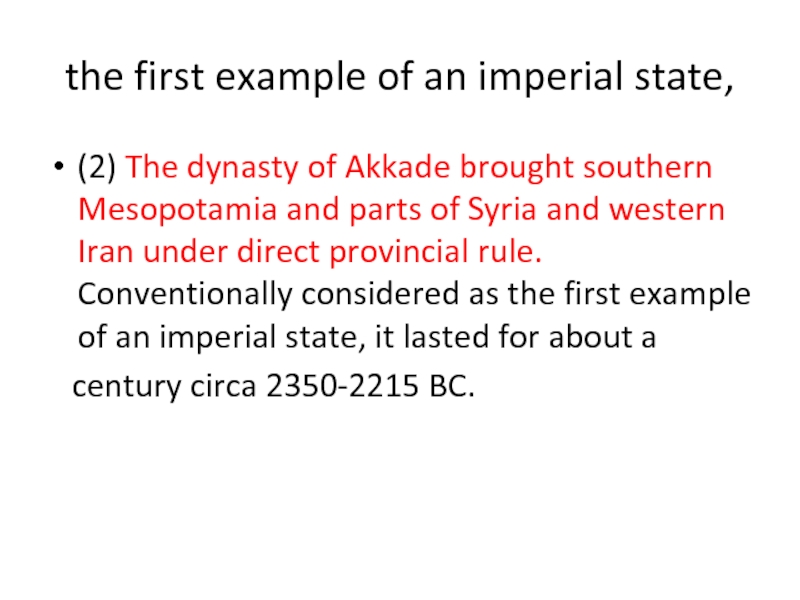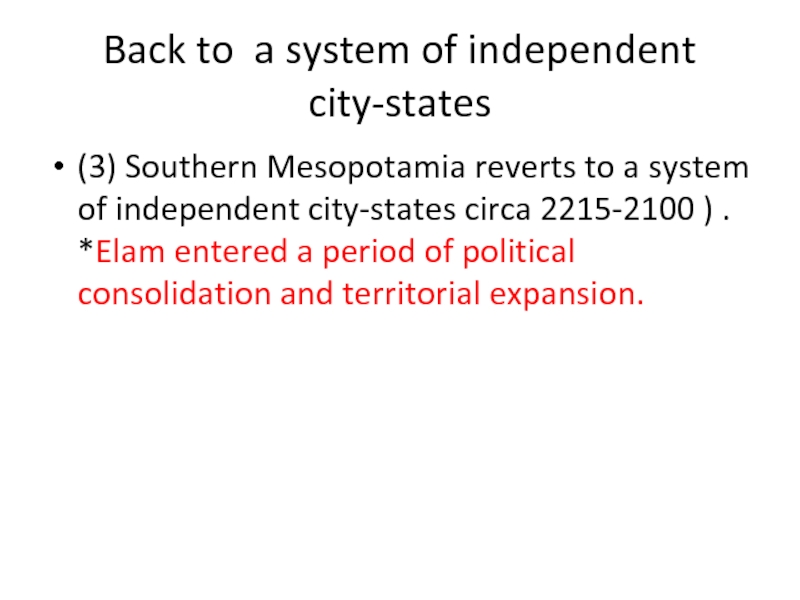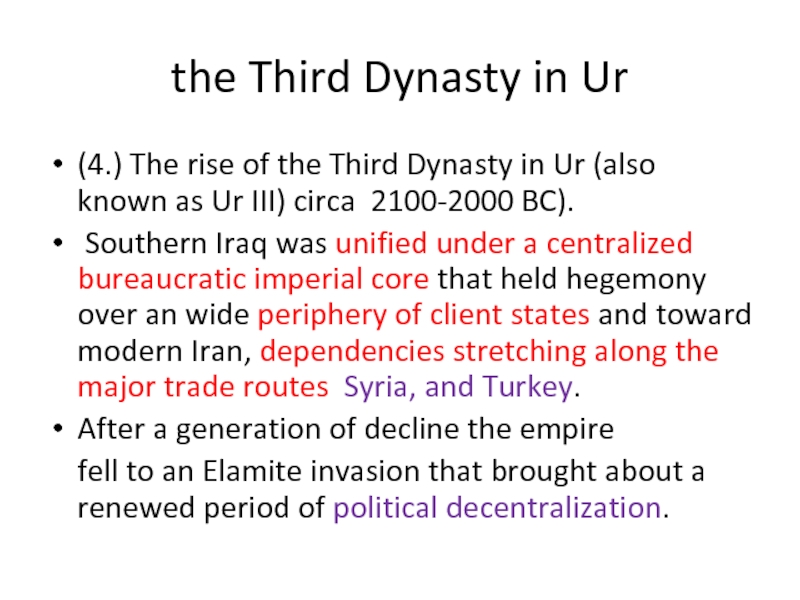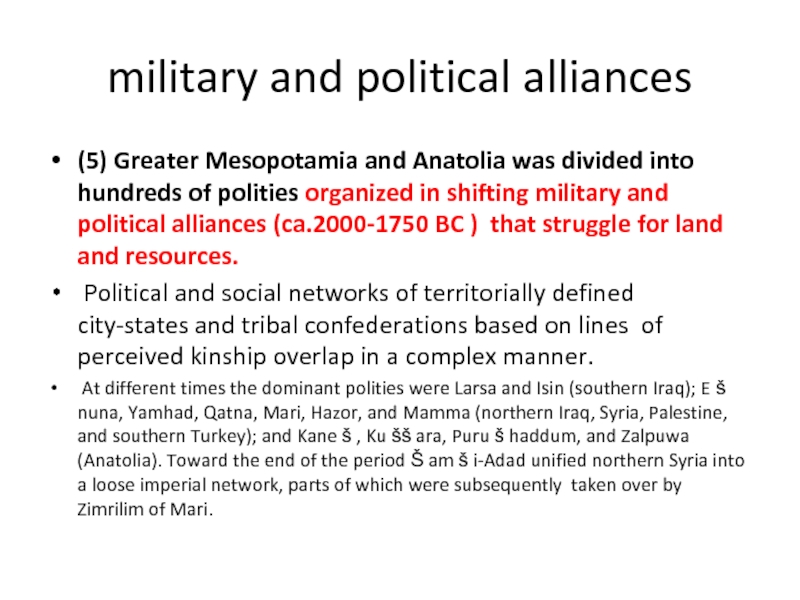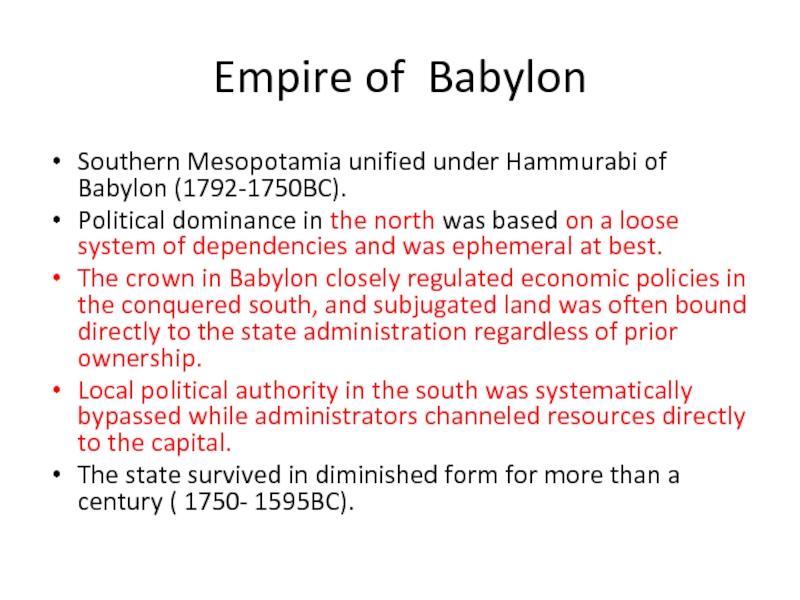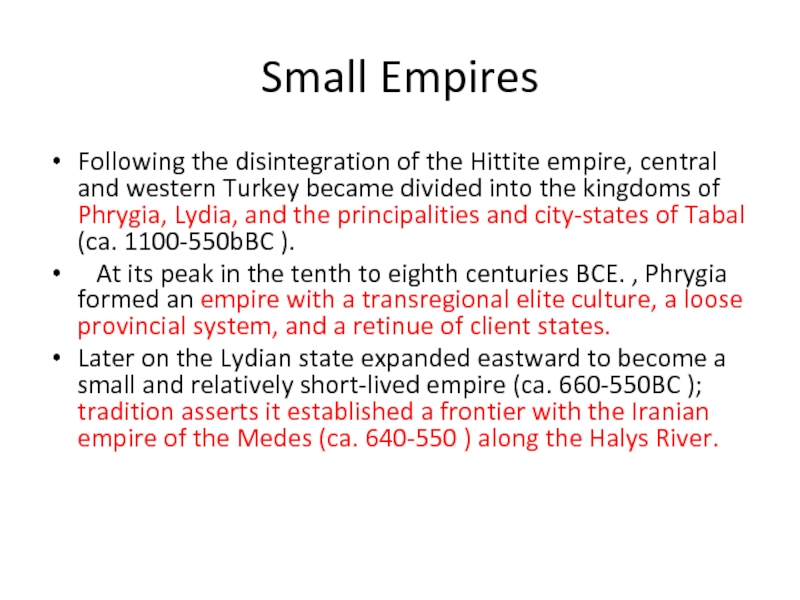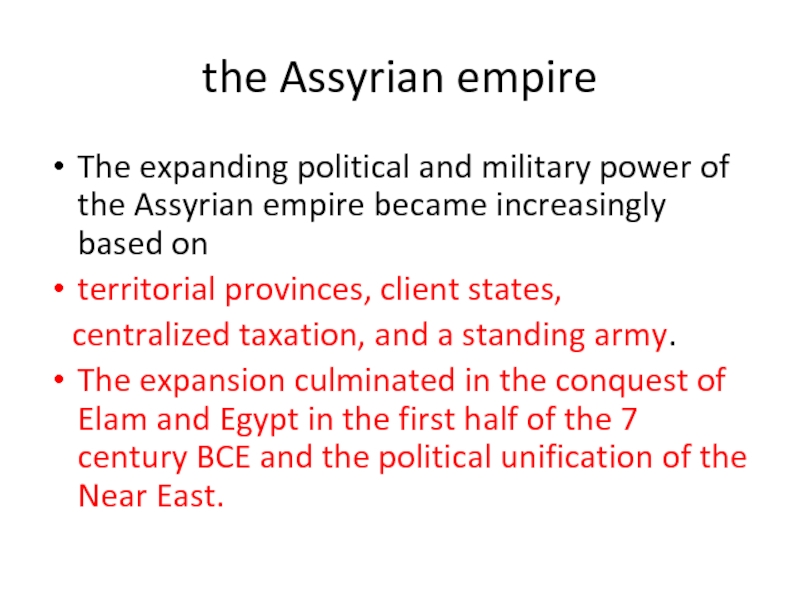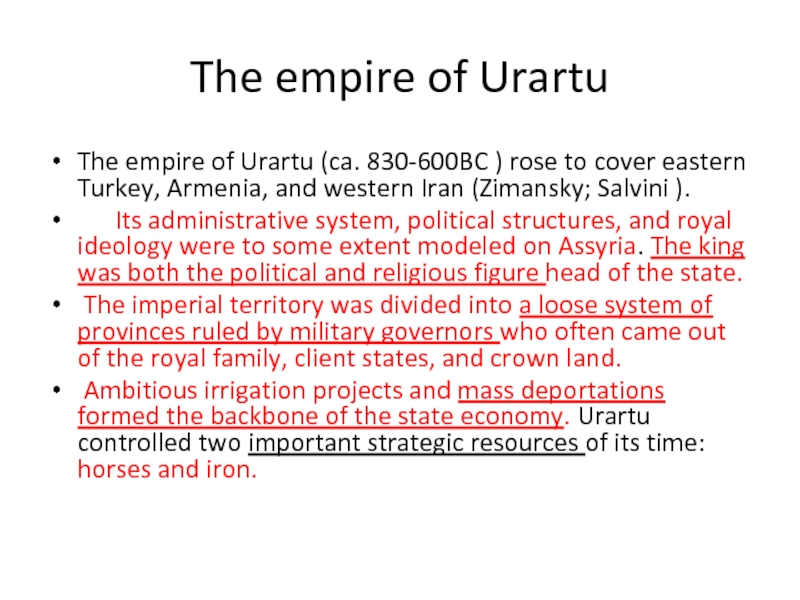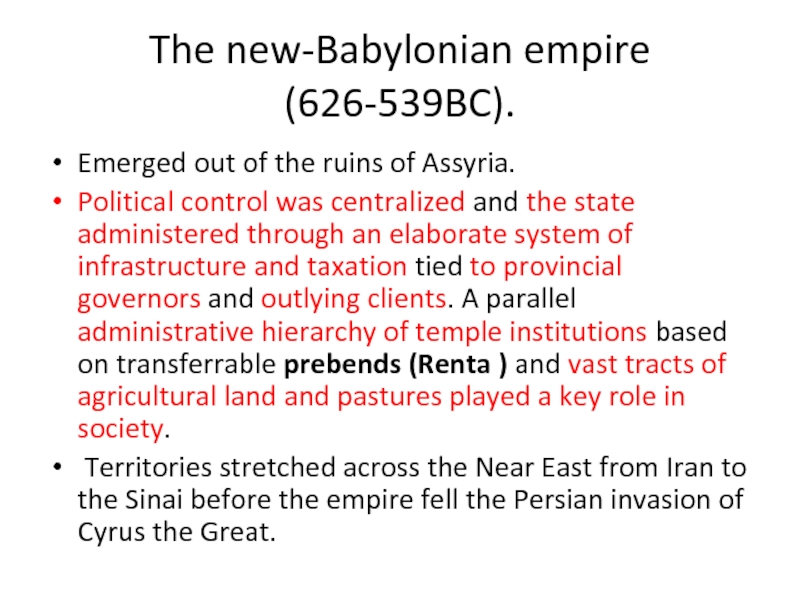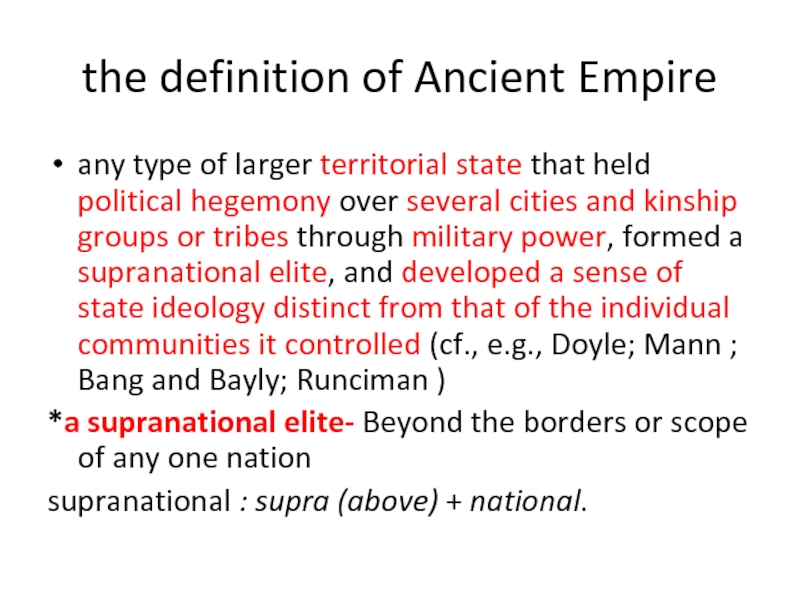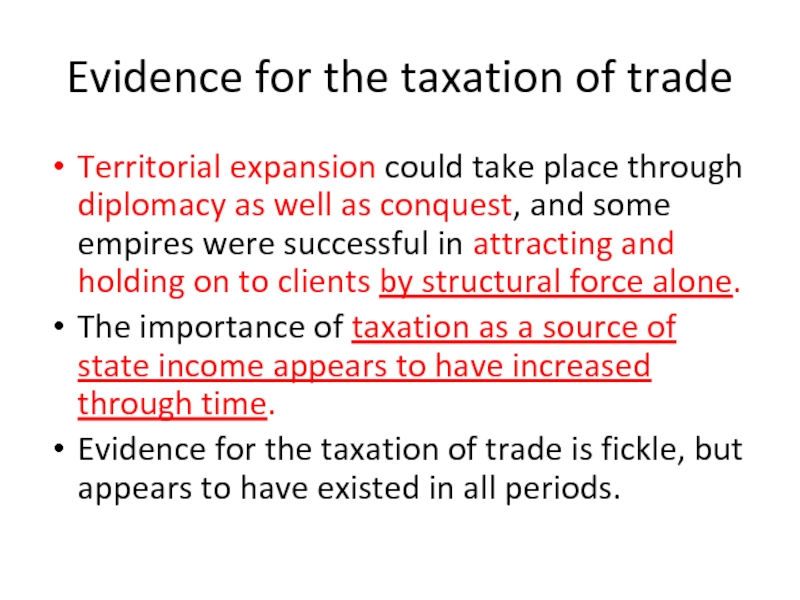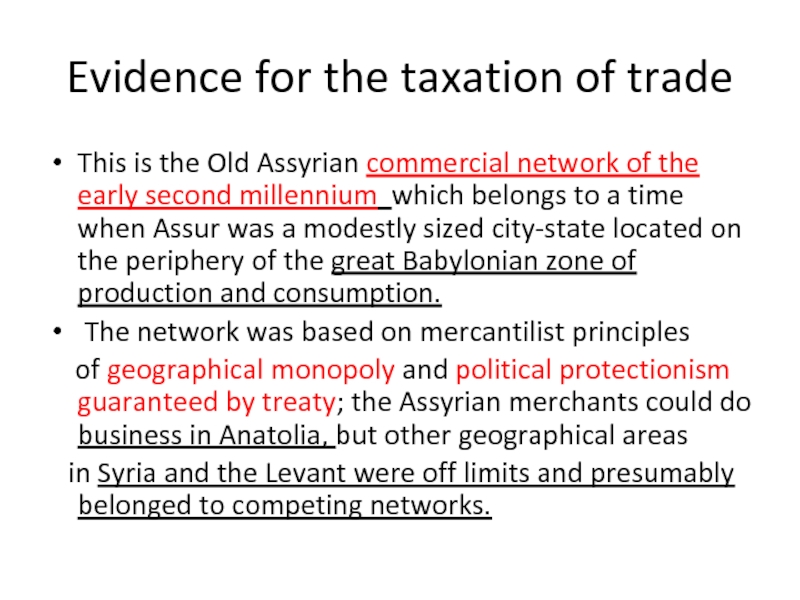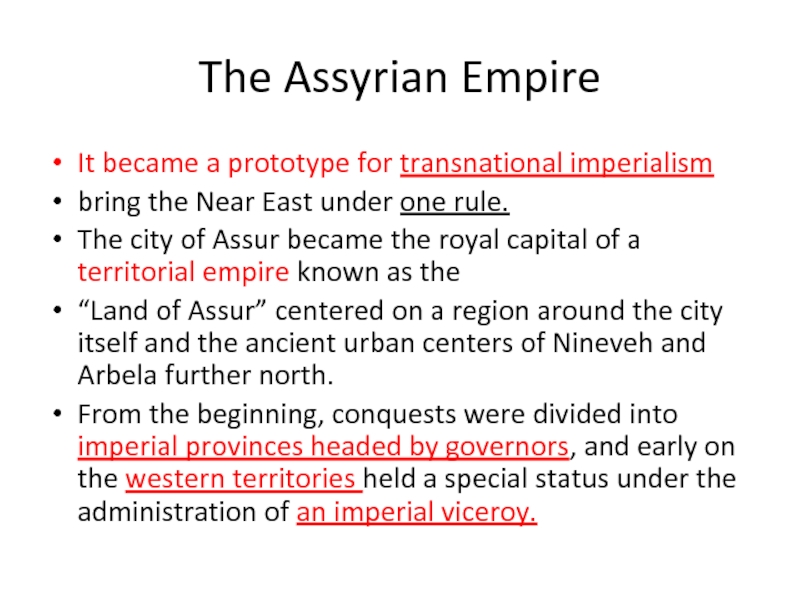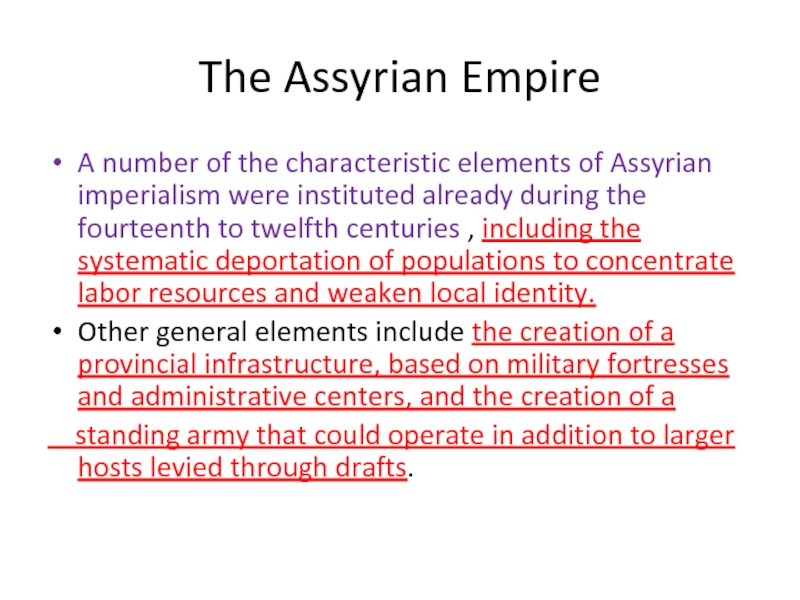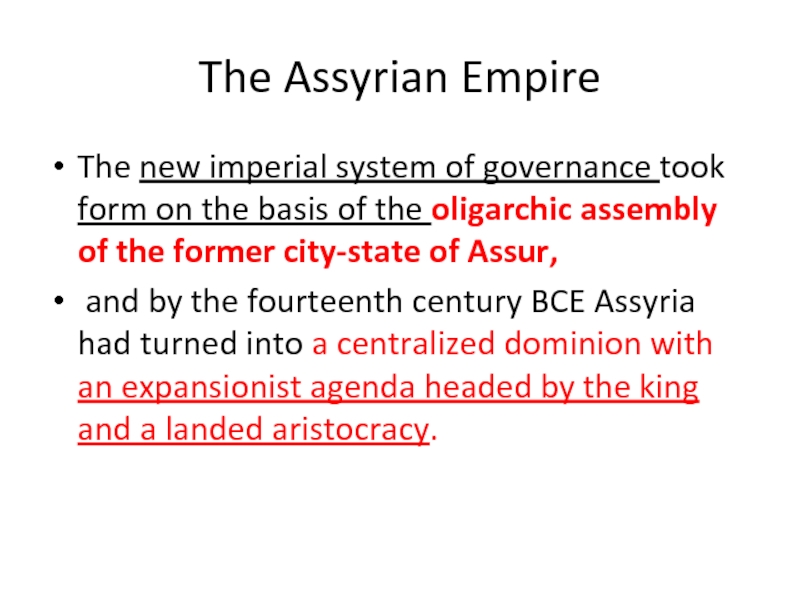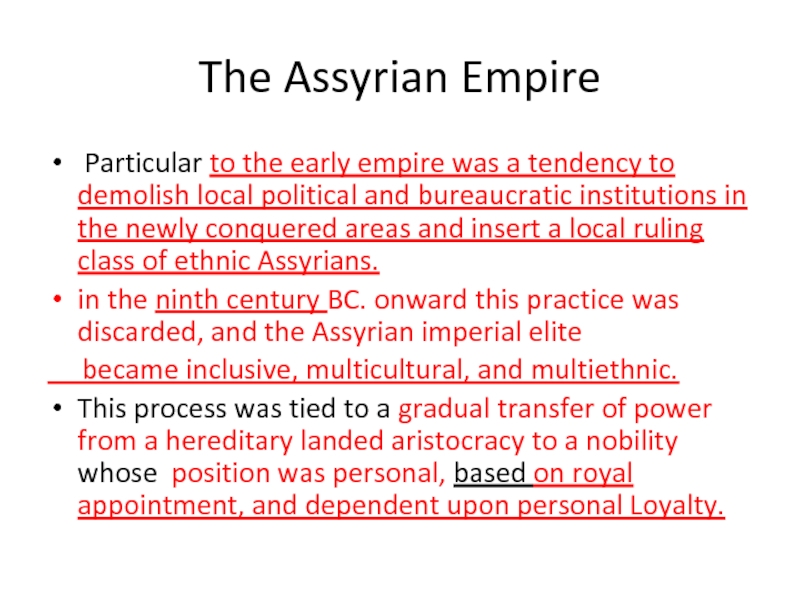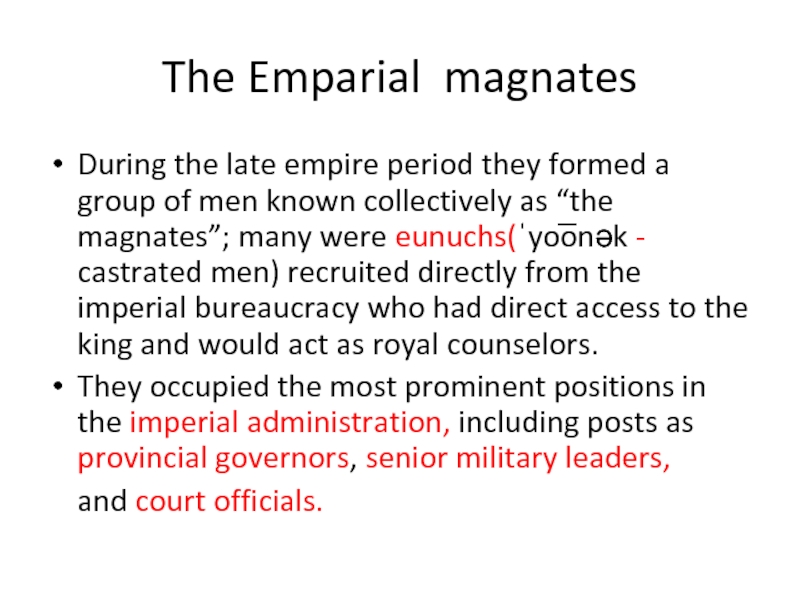- Главная
- Разное
- Дизайн
- Бизнес и предпринимательство
- Аналитика
- Образование
- Развлечения
- Красота и здоровье
- Финансы
- Государство
- Путешествия
- Спорт
- Недвижимость
- Армия
- Графика
- Культурология
- Еда и кулинария
- Лингвистика
- Английский язык
- Астрономия
- Алгебра
- Биология
- География
- Детские презентации
- Информатика
- История
- Литература
- Маркетинг
- Математика
- Медицина
- Менеджмент
- Музыка
- МХК
- Немецкий язык
- ОБЖ
- Обществознание
- Окружающий мир
- Педагогика
- Русский язык
- Технология
- Физика
- Философия
- Химия
- Шаблоны, картинки для презентаций
- Экология
- Экономика
- Юриспруденция
Ancient and modern imperialism. (Lecture 2) презентация
Содержание
- 1. Ancient and modern imperialism. (Lecture 2)
- 2. MESOPOTAMIAN EMPIRES
- 3. the first empires in Mesopotamia This area
- 4. Ancient Empires
- 5. States and cities
- 6. Theoretical studies of state dynamics in Mesopotamia
- 7. Theoretical studies of state dynamics in Mesopotamia
- 8. And also, Focus shifted toward imperial
- 9. Mesopotamian written history and statecraft Mesopotamian history
- 10. written media Sumerian Akkadian Aramaic
- 11. Mesopotamian city-state as a unifying state Two
- 12. a unifying state of city-states The
- 13. a unifying state of city-states In
- 14. The age of the city-states (1) The
- 15. the first example of an imperial state,
- 16. Back to a system of independent city-states
- 17. the Third Dynasty in Ur (4.) The
- 18. military and political alliances (5) Greater Mesopotamia
- 19. Empire of Babylon Southern Mesopotamia unified
- 20. Small Empires Following the disintegration of the
- 21. the Assyrian empire The expanding political and
- 22. The empire of Urartu The empire of
- 23. The new-Babylonian empire (626-539BC). Emerged
- 24. the definition of Ancient Empire any type
- 25. Evidence for the taxation of trade Territorial
- 26. Evidence for the taxation of trade This
- 27. The Assyrian Empire It became a
- 28. The Assyrian Empire A number of
- 29. The Assyrian Empire The new imperial
- 30. The Assyrian Empire Particular to
- 31. The Emparial magnates During the late empire
Слайд 3the first empires in Mesopotamia
This area is home to some of
the earliest human settlements, and saw the origin of agriculture, domestication, urbanization, state formation, social stratification, political centralization, bureaucracy, writing, and the first empires.
Слайд 6Theoretical studies of state dynamics in Mesopotamia have concentrated on:
Early writers
focused on conquest, emphasizing the coercive role of the state in general (Olmstead 1918; Wittfogel 1957; Liverani 2005)
* the coercive - relating to or using force or threats. forced, mandatory, coercive, compulsory.
*Self-sufficient state
* the coercive - relating to or using force or threats. forced, mandatory, coercive, compulsory.
*Self-sufficient state
Слайд 7Theoretical studies of state dynamics in Mesopotamia have concentrated
religious imperialism in
particular (Holloway 2002:40-46.).
Later on, structural typologies of social evolution, world-systems theory, and center-periphery took over as dominant explanatory
models (Larsen 1979; Postgate 1992; Lamprichs 1995; Parker 2001; Smith 2003).
Later on, structural typologies of social evolution, world-systems theory, and center-periphery took over as dominant explanatory
models (Larsen 1979; Postgate 1992; Lamprichs 1995; Parker 2001; Smith 2003).
Слайд 8And also,
Focus shifted toward imperial ideology and self-representation (Liverani ;
Winter ; Machinist; Bahrani ),
and recently the social basis of political
and infrastructural power has received particular attention with prominence
given to the study of social and political networks (Mann ; Barjamovic ; Fleming ; Adams ; von Dassow ; Radner ).
and recently the social basis of political
and infrastructural power has received particular attention with prominence
given to the study of social and political networks (Mann ; Barjamovic ; Fleming ; Adams ; von Dassow ; Radner ).
Слайд 9Mesopotamian written history and statecraft
Mesopotamian history and statecraft survive directly as
documentary records
from archives that have remained in the ground since their time of use.
Contemporary bureaucratic practice
from archives that have remained in the ground since their time of use.
Contemporary bureaucratic practice
Слайд 11Mesopotamian city-state as a unifying state
Two points are of particular relevance
for the present study:
One is the primacy and flexibility of the city-state as the basic unit of political and social organization; separation
the other is that the formation of empires in Mesopotamia always appears to have taken place as a part of—and has been dependent upon—a dynamic interaction between economic centralization, agricultural expansion, and urban transformation. centralization
One is the primacy and flexibility of the city-state as the basic unit of political and social organization; separation
the other is that the formation of empires in Mesopotamia always appears to have taken place as a part of—and has been dependent upon—a dynamic interaction between economic centralization, agricultural expansion, and urban transformation. centralization
Слайд 12a unifying state of city-states
The center of a larger state
would usually be a former city-state that rose to supremacy,
Mesopotamian empires were often shaped by individuals or groups who were not native to the communities they came to rule over (the
Akkadian empire, the state of Hammurabi, the Kassite state, Mitanni).
Mesopotamian empires were often shaped by individuals or groups who were not native to the communities they came to rule over (the
Akkadian empire, the state of Hammurabi, the Kassite state, Mitanni).
Слайд 13a unifying state of city-states
In some cases they arose in
secondary response to an outside competitor, created under pressure (Urartu),
or through a revolt against a former overlord (the Babylonian empire).
or through a revolt against a former overlord (the Babylonian empire).
Слайд 14The age of the city-states
(1) The age of the city-states circa
2900-2350BC )in southern Mesopotamia
(e.g., Lagaš , Umma, Kiš , Nippur, Ur, Uruk), Syria (e.g., Ebla, Ur š u, Mari),
and probably also Anatolia, Palestine, and Iran. The cities formed leagues and were organized according to an internal political hierarchy.
(e.g., Lagaš , Umma, Kiš , Nippur, Ur, Uruk), Syria (e.g., Ebla, Ur š u, Mari),
and probably also Anatolia, Palestine, and Iran. The cities formed leagues and were organized according to an internal political hierarchy.
Слайд 15the first example of an imperial state,
(2) The dynasty of Akkade
brought southern Mesopotamia and parts of Syria and western Iran under direct provincial rule. Conventionally considered as the first example of an imperial state, it lasted for about a
century circa 2350-2215 BC.
century circa 2350-2215 BC.
Слайд 16Back to a system of independent city-states
(3) Southern Mesopotamia reverts to
a system of independent city-states circa 2215-2100 ) . *Elam entered a period of political consolidation and territorial expansion.
Слайд 17the Third Dynasty in Ur
(4.) The rise of the Third Dynasty
in Ur (also known as Ur III) circa 2100-2000 BC).
Southern Iraq was unified under a centralized bureaucratic imperial core that held hegemony over an wide periphery of client states and toward modern Iran, dependencies stretching along the major trade routes Syria, and Turkey.
After a generation of decline the empire
fell to an Elamite invasion that brought about a renewed period of political decentralization.
Southern Iraq was unified under a centralized bureaucratic imperial core that held hegemony over an wide periphery of client states and toward modern Iran, dependencies stretching along the major trade routes Syria, and Turkey.
After a generation of decline the empire
fell to an Elamite invasion that brought about a renewed period of political decentralization.
Слайд 18military and political alliances
(5) Greater Mesopotamia and Anatolia was divided into
hundreds of polities organized in shifting military and political alliances (ca.2000-1750 BC ) that struggle for land and resources.
Political and social networks of territorially defined city-states and tribal confederations based on lines of perceived kinship overlap in a complex manner.
At different times the dominant polities were Larsa and Isin (southern Iraq); E š nuna, Yamhad, Qatna, Mari, Hazor, and Mamma (northern Iraq, Syria, Palestine, and southern Turkey); and Kane š , Ku šš ara, Puru š haddum, and Zalpuwa (Anatolia). Toward the end of the period Š am š i-Adad unified northern Syria into a loose imperial network, parts of which were subsequently taken over by Zimrilim of Mari.
Political and social networks of territorially defined city-states and tribal confederations based on lines of perceived kinship overlap in a complex manner.
At different times the dominant polities were Larsa and Isin (southern Iraq); E š nuna, Yamhad, Qatna, Mari, Hazor, and Mamma (northern Iraq, Syria, Palestine, and southern Turkey); and Kane š , Ku šš ara, Puru š haddum, and Zalpuwa (Anatolia). Toward the end of the period Š am š i-Adad unified northern Syria into a loose imperial network, parts of which were subsequently taken over by Zimrilim of Mari.
Слайд 19Empire of Babylon
Southern Mesopotamia unified under Hammurabi of Babylon (1792-1750BC).
Political dominance in the north was based on a loose system of dependencies and was ephemeral at best.
The crown in Babylon closely regulated economic policies in the conquered south, and subjugated land was often bound directly to the state administration regardless of prior ownership.
Local political authority in the south was systematically bypassed while administrators channeled resources directly to the capital.
The state survived in diminished form for more than a century ( 1750- 1595BC).
Слайд 20Small Empires
Following the disintegration of the Hittite empire, central and western
Turkey became divided into the kingdoms of Phrygia, Lydia, and the principalities and city-states of Tabal (ca. 1100-550bBC ).
At its peak in the tenth to eighth centuries BCE. , Phrygia formed an empire with a transregional elite culture, a loose provincial system, and a retinue of client states.
Later on the Lydian state expanded eastward to become a small and relatively short-lived empire (ca. 660-550BC ); tradition asserts it established a frontier with the Iranian empire of the Medes (ca. 640-550 ) along the Halys River.
At its peak in the tenth to eighth centuries BCE. , Phrygia formed an empire with a transregional elite culture, a loose provincial system, and a retinue of client states.
Later on the Lydian state expanded eastward to become a small and relatively short-lived empire (ca. 660-550BC ); tradition asserts it established a frontier with the Iranian empire of the Medes (ca. 640-550 ) along the Halys River.
Слайд 21the Assyrian empire
The expanding political and military power of the Assyrian
empire became increasingly based on
territorial provinces, client states,
centralized taxation, and a standing army.
The expansion culminated in the conquest of Elam and Egypt in the first half of the 7 century BCE and the political unification of the Near East.
territorial provinces, client states,
centralized taxation, and a standing army.
The expansion culminated in the conquest of Elam and Egypt in the first half of the 7 century BCE and the political unification of the Near East.
Слайд 22The empire of Urartu
The empire of Urartu (ca. 830-600BC ) rose
to cover eastern Turkey, Armenia, and western Iran (Zimansky; Salvini ).
Its administrative system, political structures, and royal ideology were to some extent modeled on Assyria. The king was both the political and religious figure head of the state.
The imperial territory was divided into a loose system of provinces ruled by military governors who often came out of the royal family, client states, and crown land.
Ambitious irrigation projects and mass deportations formed the backbone of the state economy. Urartu controlled two important strategic resources of its time: horses and iron.
Its administrative system, political structures, and royal ideology were to some extent modeled on Assyria. The king was both the political and religious figure head of the state.
The imperial territory was divided into a loose system of provinces ruled by military governors who often came out of the royal family, client states, and crown land.
Ambitious irrigation projects and mass deportations formed the backbone of the state economy. Urartu controlled two important strategic resources of its time: horses and iron.
Слайд 23
The new-Babylonian empire (626-539BC).
Emerged out of the ruins of Assyria.
Political control
was centralized and the state administered through an elaborate system of infrastructure and taxation tied to provincial governors and outlying clients. A parallel administrative hierarchy of temple institutions based on transferrable prebends (Renta ) and vast tracts of agricultural land and pastures played a key role in society.
Territories stretched across the Near East from Iran to the Sinai before the empire fell the Persian invasion of Cyrus the Great.
Territories stretched across the Near East from Iran to the Sinai before the empire fell the Persian invasion of Cyrus the Great.
Слайд 24the definition of Ancient Empire
any type of larger territorial state that
held political hegemony over several cities and kinship groups or tribes through military power, formed a supranational elite, and developed a sense of state ideology distinct from that of the individual communities it controlled (cf., e.g., Doyle; Mann ; Bang and Bayly; Runciman )
*a supranational elite- Beyond the borders or scope of any one nation
supranational : supra (above) + national.
*a supranational elite- Beyond the borders or scope of any one nation
supranational : supra (above) + national.
Слайд 25Evidence for the taxation of trade
Territorial expansion could take place through
diplomacy as well as conquest, and some empires were successful in attracting and holding on to clients by structural force alone.
The importance of taxation as a source of state income appears to have increased through time.
Evidence for the taxation of trade is fickle, but appears to have existed in all periods.
The importance of taxation as a source of state income appears to have increased through time.
Evidence for the taxation of trade is fickle, but appears to have existed in all periods.
Слайд 26Evidence for the taxation of trade
This is the Old Assyrian commercial
network of the early second millennium which belongs to a time when Assur was a modestly sized city-state located on the periphery of the great Babylonian zone of production and consumption.
The network was based on mercantilist principles
of geographical monopoly and political protectionism guaranteed by treaty; the Assyrian merchants could do business in Anatolia, but other geographical areas
in Syria and the Levant were off limits and presumably belonged to competing networks.
The network was based on mercantilist principles
of geographical monopoly and political protectionism guaranteed by treaty; the Assyrian merchants could do business in Anatolia, but other geographical areas
in Syria and the Levant were off limits and presumably belonged to competing networks.
Слайд 27The Assyrian Empire
It became a prototype for transnational imperialism
bring the
Near East under one rule.
The city of Assur became the royal capital of a territorial empire known as the
“Land of Assur” centered on a region around the city itself and the ancient urban centers of Nineveh and Arbela further north.
From the beginning, conquests were divided into imperial provinces headed by governors, and early on the western territories held a special status under the administration of an imperial viceroy.
The city of Assur became the royal capital of a territorial empire known as the
“Land of Assur” centered on a region around the city itself and the ancient urban centers of Nineveh and Arbela further north.
From the beginning, conquests were divided into imperial provinces headed by governors, and early on the western territories held a special status under the administration of an imperial viceroy.
Слайд 28The Assyrian Empire
A number of the characteristic elements of Assyrian
imperialism were instituted already during the fourteenth to twelfth centuries , including the systematic deportation of populations to concentrate labor resources and weaken local identity.
Other general elements include the creation of a provincial infrastructure, based on military fortresses and administrative centers, and the creation of a
standing army that could operate in addition to larger hosts levied through drafts.
Other general elements include the creation of a provincial infrastructure, based on military fortresses and administrative centers, and the creation of a
standing army that could operate in addition to larger hosts levied through drafts.
Слайд 29The Assyrian Empire
The new imperial system of governance took form
on the basis of the oligarchic assembly of the former city-state of Assur,
and by the fourteenth century BCE Assyria had turned into a centralized dominion with an expansionist agenda headed by the king and a landed aristocracy.
and by the fourteenth century BCE Assyria had turned into a centralized dominion with an expansionist agenda headed by the king and a landed aristocracy.
Слайд 30The Assyrian Empire
Particular to the early empire was a
tendency to demolish local political and bureaucratic institutions in the newly conquered areas and insert a local ruling class of ethnic Assyrians.
in the ninth century BC. onward this practice was discarded, and the Assyrian imperial elite
became inclusive, multicultural, and multiethnic.
This process was tied to a gradual transfer of power from a hereditary landed aristocracy to a nobility whose position was personal, based on royal appointment, and dependent upon personal Loyalty.
in the ninth century BC. onward this practice was discarded, and the Assyrian imperial elite
became inclusive, multicultural, and multiethnic.
This process was tied to a gradual transfer of power from a hereditary landed aristocracy to a nobility whose position was personal, based on royal appointment, and dependent upon personal Loyalty.
Слайд 31The Emparial magnates
During the late empire period they formed a group
of men known collectively as “the magnates”; many were eunuchs(ˈyo͞onək - castrated men) recruited directly from the imperial bureaucracy who had direct access to the king and would act as royal counselors.
They occupied the most prominent positions in the imperial administration, including posts as provincial governors, senior military leaders,
and court officials.
They occupied the most prominent positions in the imperial administration, including posts as provincial governors, senior military leaders,
and court officials.
